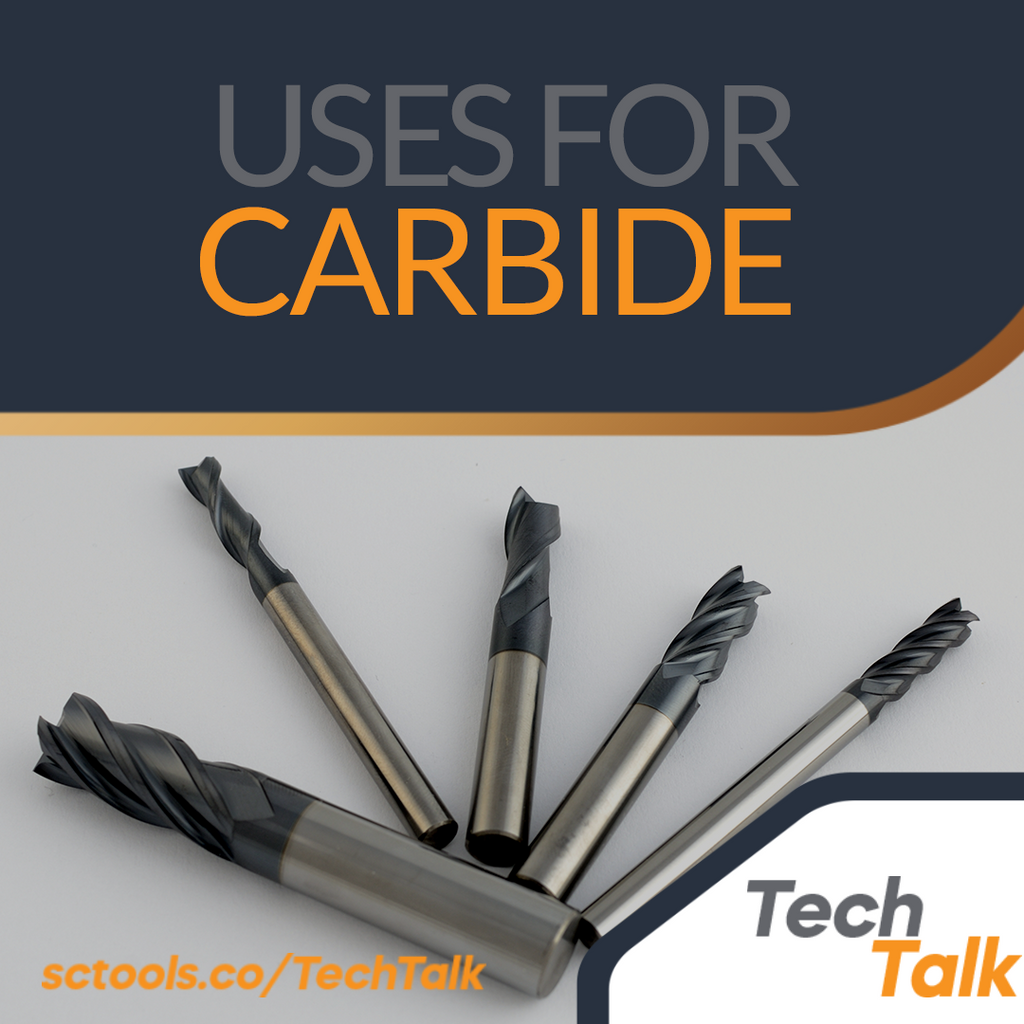Carbide is a chemical compound composed of a semi-metallic element or pure elements and carbon. The carbide symbol is made of two carbon atoms that form the carbide ions.
The general properties of carbides include:
- Carbide materials are good conductors of electricity
- Carbides have a high melting point
- Carbide compounds have luster (gentle shining light reflected on the surface.
- Carbides are good conductors of heat.
To effectively use Carbide, it is vital to know the types available in most cutting tool manufacturing companies such as SCTools, and how to maximize its unique quality as you use it.
Types of Carbide
Tungsten Carbide
Tungsten carbide competes with a diamond in hardness. The alloy is made from tungsten and carbon, forming a tough compound with a chemical formula WC. Tungsten carbide material is used in marking men's wedding rings due to its dark luster. Other uses include; military weapons, milling products, and high-speed tools.
Boron Carbide
Boron carbide material is composed of one carbon atom and four boron atoms creating a hard synthetic material. Some products made from the chemical compound include security padlocks, cutting tools, and tank armors.
Also, since the carbide has a higher hardness than silicon and aluminum carbide, the material is used in low-temperature applications like water jet nozzles of sandblasters.
Aluminum Carbide
Aluminum carbide is a by-product of manufacturing calcium carbide. When in contact with water, it decomposes to form methane. The compound is applied to other metals to prevent the misshaping that happens over time.
Aluminum carbide is used in the metallurgical industry to reduce metal oxides and has a chemical reaction catalyst in the chemical industry. In addition, the compound is used as an abrasive high-speed cutting tool for its hardness, similar to topaz.
Calcium Carbide
Also known as Calcium Acetylene, the compound is made from two carbon atoms and one atom of calcium. The uses of calcium carbide include:
- Using it as headlights for automobiles
- Removing sulfur from iron in a process called sulphurization
- Helping in the removal of oxygen when manufacturing steel
- A derivative of calcium carbide, acetylene is used as raw material for PVC
- Ripening agent
Silicon Carbide
Silicon carbide is a compound made from one silicon and a carbon atom. It has excellent thermal resistance due to its low coefficient to thermal expansion. For its semiconducting properties, silicon carbide is used in making car clutches, ceramic plates, bulletproof vests, and foundry crucibles.
In electrical applications, the compound was initially used as lightning arresters in high-voltage systems and recently in power electronics.
Uses of Carbide
1. Industrial alloys
Carbide being versatile and easy to mold, the compound is combined with other metals like nickel and iron to make products such as:
- Electronics
- Industrial gear
- Aeronautical spare parts
- Radiation shielding
- Commercial construction materials
2. Surgical tools
Tungsten carbide alloy is used in making medical tools—the coating shields surgical equipment from radiation. For instance, surgical scissors are coated with tungsten carbide, lending surgeons a firmer grip during surgery.
Other surgical tools covered with carbide include:
- Scalpels
- Butterfly probes
- Surgical pins
- Bone rasps
- Wire cutters
3. Cemented Carbides
Cemented carbide is an alloy of tungsten carbide and cobalt. For its strength and hardness, the alloy gets used to make metal cutting tools like drills, lathes, and milling cutters.
4. Jewelry
Wedding rings made from tungsten carbide are cheaper than platinum or gold. The durability of carbide rings makes them last longer. Other carbide jewelry products include earrings and pendants.
Other Uses of Carbide
Calcium carbide produces acetylene gas which is used as a fuel source for illumination, furnaces, and welding.
Boron carbide gets used to make refractory applications like nuclear reactors for its thermal stability.
Why Use Carbide?
The rigidity of tungsten carbide makes it stronger than steel. Its rigidity on the Moh’s hardness scale is between 8.5 and 9, slightly behind the diamond. Even high-speed steel (HSS) is not firmer than carbide. Tungsten carbide is much harder, and its tools have longer tool life. SCTools is the leading store giving you the ideal industrial cutting tool made from high-quality carbide. Contact us today, and we will advise on the best carbide to meet your current needs
 |
If you have any questions about carbide cutting tools, end mills, drills, etc. be sure to reach out to us @ sctools.co/Home or call us at (877)737-0987. We help you machine better! |



Comments (0)